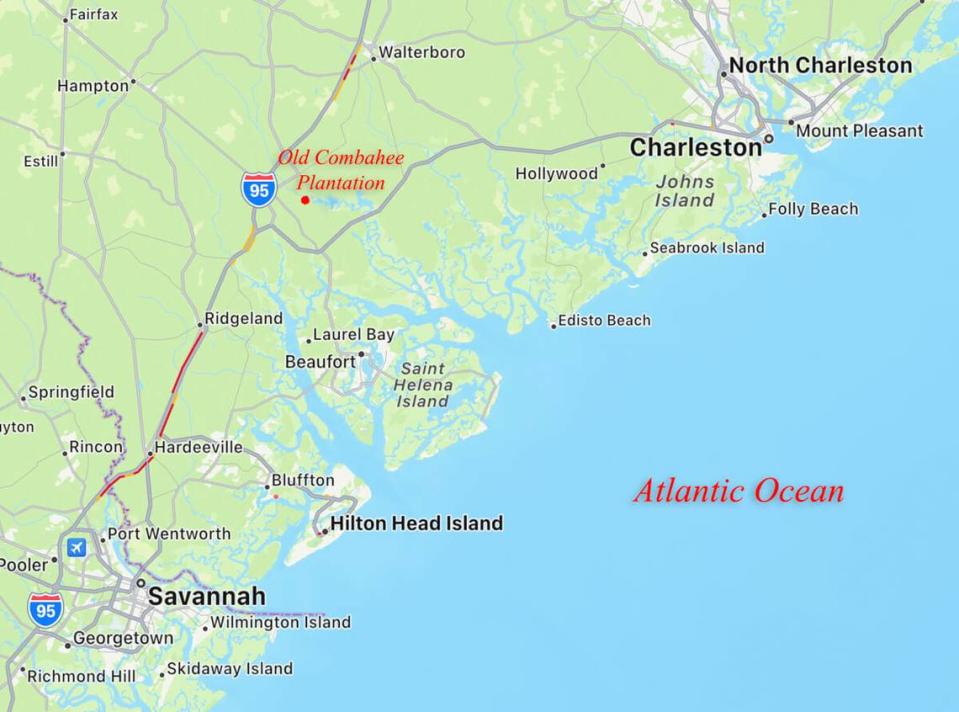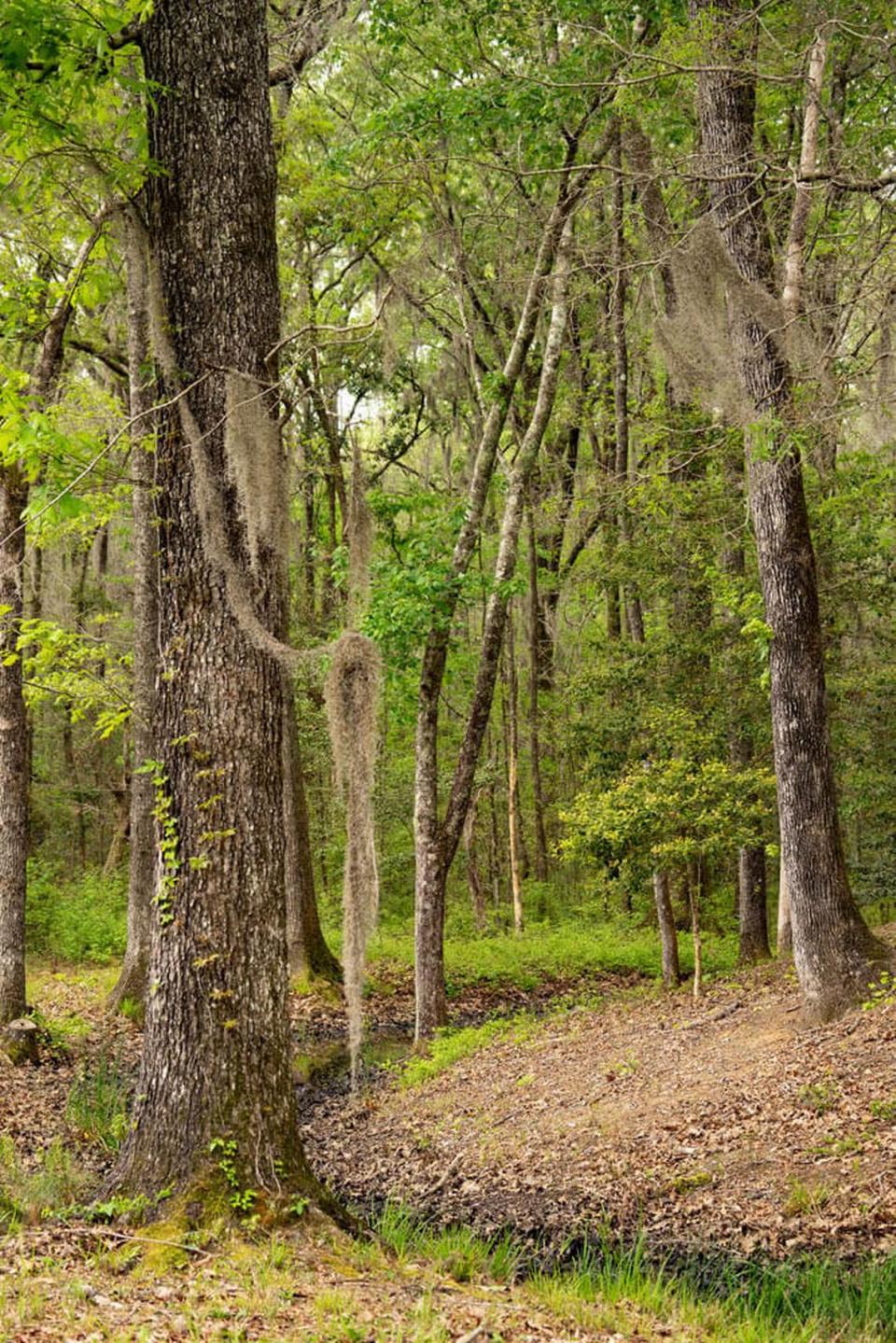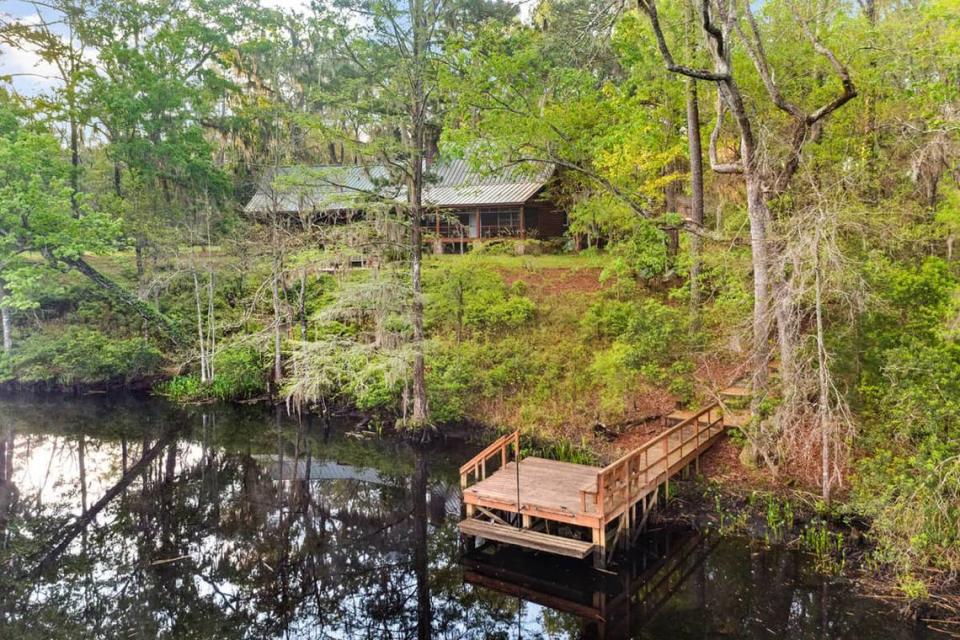Beaufort Co. plantation on the market for over $11M. Here’s its hidden Lowcountry history
- Oops!Something went wrong.Please try again later.
On a Friday evening after work, C. Leigh Stevens did what a lot of people do, he poured himself a drink.
Stevens’ cocktail, however, was sipped on a train out of Manhattan’s Penn Station roaring toward the Lowcountry with other wealthy Wall Street businessmen. It was the 1940s and they were clamoring to their South Carolina plantations for the weekend.
“They’d get off and go to their various plantations and party,” said Jessica Loring, speaking about her grandfather. “[They’d] get on the train Sunday afternoon and then be back at work in the morning.”
Nearly eighty years and four generations later, the Old Combahee Plantation is on the market for $11.1 million. With boundaries that haven’t changed since established in 1754, the 1,851 acre property borders over four miles on the Combahee River in Beaufort County north of Ridgeland.
The Plantation House, built by Loring’s parents, is located on a bluff along Izard’s Creek, a Combahee River tributary, with two docks and a boat landing. Its the only livable structure on the property, not including hunting blinds and an old fish camp.
“It’s beautiful and you just feel its history all around you,” Loring said. “And the work that people did. It’s incredibly awesome and inspirational.”
To protect the plantation’s natural beauty, Loring put a conservation easement on the property, which is a legal agreement that permanently protects the use of the land from commercial and residential development to preserve its natural and historic features.
Many plantations in the ACE Basin watershed have entered conservation easements in the past decades. The ACE Basin watershed is about 1.6 million acres and one of the largest undeveloped wetlands and uplands ecosystems remaining on the Atlantic Coast, according to the Nature Conservatory.
“I allow for some change in the property, certainly,” Loring said. “But I want it with respect to the land and I want whoever buys it to love Izard’s Creek and the beauty of the woods surrounding it because [it is] extraordinary and very, very unique. There’s nothing like it.”

Pottery and arrowheads
The plantation’s history goes further back than Gatsbyesque stories to before the Yemassee Indian Wars, which were from 1715 to 1716. The war partially started over British-American colonialist encroachment upon American Indian land, including what is now the plantation.
“Initially, that land back in the early 1700s was set aside for Indian lands and then surveyors came and started selling it,” Loring said. “They completely didn’t pay attention to the Indian rights.”
Loring said that they still find American Indian pottery and arrowheads on the property today.
‘Giant hydraulic machine’
The plantation was first owned by the Izards, a wealthy South Carolina family, before Mary Izard married politician Arthur Middleton in 1764. About 12 years later, after British troops marched over the land during the Revolutionary War, Middleton signed the Declaration of Independence.
During this time, the Middletons lived in Charleston, but made much of their money off of slavery at rice plantations, including the Old Combahee Plantation.
“The work done there by the enslaved African Americans is extraordinary,” Loring said. “They dug canals through the whole property leading out to the Combahee River.”
The canals’ purpose was two-fold, they irrigated the fields and ensured the land would have drainage so it wouldn’t flood, according to the S.C. Sea Grant Consortium.
“The place worked like a giant hydraulic machine,” Loring said. The canals are still on the property today, and can be kayaked.
When exploring the canals and creek, alligators’ bumpy heads and anhingas’ slender necks, among other wildlife, peak out of the water.
“My main joy of that property is the kayaking and the exploring and the beauty of the creek and landscape there,” Loring said. “I adore it.”
Civil War forts
During the Civil War, Confederate Gen. Robert E. Lee had soldiers build “earthen fortifications” where they would man cannons in front of dugouts. There are two still on the property.
From this time period, Loring finds bullets and buttons.

Sherman’s March to the Sea, waged by the Union Army during the Civil War, burned down much of the physical evidence of slavery on the plantation in 1864, including a rice mill, the slave quarters and a plantation house, according to Chip Hall at Plantation Services Inc., which is listing the plantation for sale.
It stayed in the Middleton family until about 1913, according to Loring, and passed through a couple more hands until Stevens, her grandfather, purchased the land, along with four other plantations, in 1938 from a Georgia lumber company that went bankrupt. Stevens made his money from time-and-motion studies.
The land Stevens purchased was about 4,000 acres combined, and he named the properties Auldbrass, a modification of ”Old Brass.” That’s where he would go on his weekender trips from New York. They’d take the train to Yemassee so often that the road in front of the station was eventually named “Wall Street” by the locals.
Since then, Stevens’ daughter, Loring’s mother, sold off all but the Old Combahee plantation, and built the house there.

Loring would spend the summers on the plantation with her family. She said she remembers “horsing around and riding horses” and learning how to drive on River Road, which has since been paved.
Now, she frequently walks the property with her husband. After five generations, she said it makes sense to move on because most of their family is now on the West Coast.
“Whoever buys it, I want them to love and respect it,” she said. “It’s very much a place with its own being and its own soul. I love that place.”

